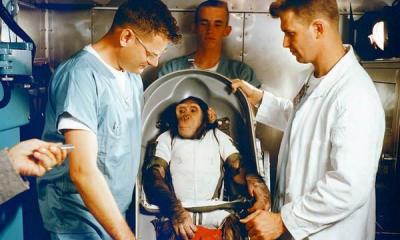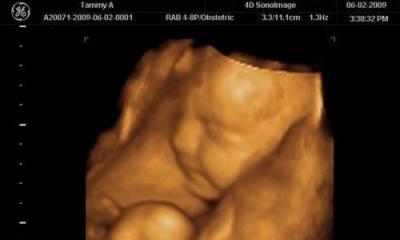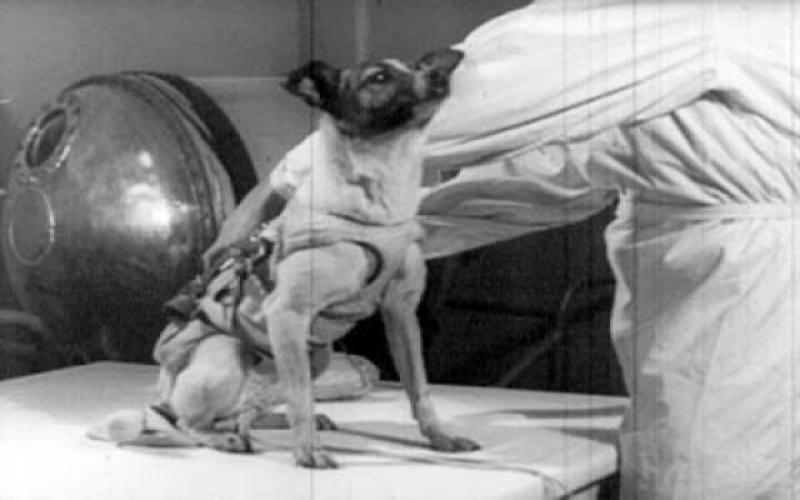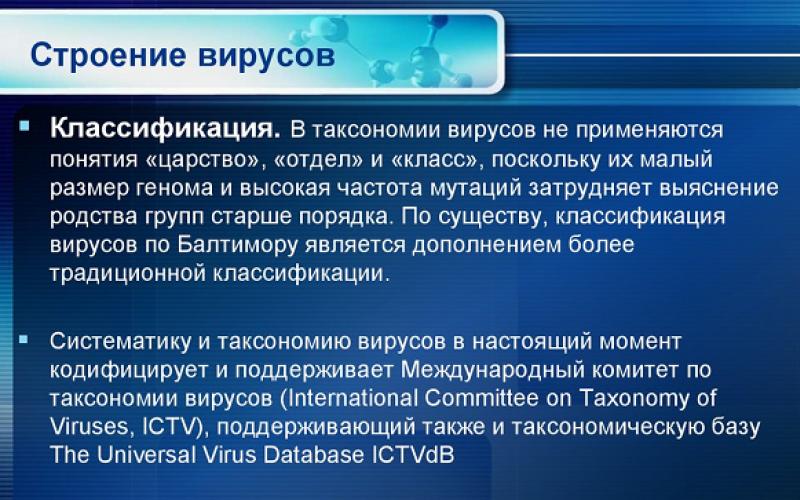The second trimester of pregnancy is coming to an end. The kid is already kicking his mother with might and main and somersaults in his stomach. The future dad can also feel these movements if he puts his hand on his wife's stomach. However, the contact between father and child can be more than just tactile. Dad, like mom, needs to talk to the baby. The baby hears well and distinguishes low-pitched sounds best of all, so dad's voice will very soon become familiar and familiar to him.
25th week of pregnancy: fetal development, height and weight
 The weight of the fetus this week is 650-700 g, height is 28-29 cm. The melanin pigment accumulates in the baby’s hair and skin, subcutaneous tissue is deposited all over the body, but if you look at the baby, only his face now looks plump (due to lumps of fat on the cheeks).
The weight of the fetus this week is 650-700 g, height is 28-29 cm. The melanin pigment accumulates in the baby’s hair and skin, subcutaneous tissue is deposited all over the body, but if you look at the baby, only his face now looks plump (due to lumps of fat on the cheeks).
At week 25, the improvement of the lungs of the fetus continues. The baby trains to breathe - inflates the chest. During such breaths, a small amount of amniotic fluid enters the respiratory tract, but this does not harm the baby.
A connection is being established between the brain and the endocrine glands, in particular the adrenal glands. Due to the maturation of the structures of the inner ear, the coordination of the baby's movements improves. In boys, another very important physiological process begins - the descent of the testicles from the abdominal cavity into the scrotum.
Every week, the baby becomes stronger, calcium is actively deposited in its bones, muscle fibers thicken and lengthen. Therefore, the mother can no longer ignore the blows of the baby with legs or handles on the wall of the uterus. If the baby becomes very restless, you can stroke the stomach. Researchers claim that this has a positive effect on the condition of the fetus.
Feelings and well-being of the mother at the end of the 2nd trimester
In general, the woman's health at the 25th week of pregnancy is good. But it is also possible to develop a number of health problems:

The weight of a woman increases during this week by another 400-450 g. The total increase should not exceed 7-7.5 kg. For expectant mothers who were initially overweight, the recommended figure is 4-4.5 kg. Pregnant women should maintain their weight within the normal range through proper nutrition, but not through diets. Starvation during pregnancy can lead to a significant deterioration in the well-being of the expectant mother (appear,) and impaired development of the baby (he may experience malnutrition against the background of a constant nutritional deficiency).
Abdominal parameters at 25 weeks pregnant

At week 25, the bottom of the uterus is above the navel. In numbers, this is somewhere 24-26 cm above the articulation of the frontal bones. If the standing height of the fundus of the uterus (VDM) differs significantly from the recommended value, it is necessary to look for the cause of this.
WDM less than normal can be with:
- oligohydramnios.
- Fetal hypotrophy - a discrepancy between the size of the fetus and the gestational age.
- Transverse presentation of the crumbs - when it lies not along, but across the uterus.
Too rapid increase in the size of the uterus is typical for:
- Polyhydramnios.
- Multiple pregnancy.
- Large fruit.
As for the circumference of the abdomen, it should also grow by several centimeters weekly at this time.
Possible complications and their manifestations
At week 25, various diseases can complicate the course of pregnancy. Let's take a look at some of the signs that they might be suspected.
And finally, at week 25, the expectant mother may experience preeclampsia - a severe complication that threatens the development of the baby and often causes a woman to prematurely deliver. Preeclampsia is characterized by a triad of symptoms:
- Edema.
- Protein in the urine.
Required Research
In continuation of the topic of pregnancy complications, I would like to note that the timely detection of many of the listed pathological conditions is possible only if the expectant mother regularly visits a gynecologist and undergoes all the necessary studies.
At the appointment at the antenatal clinic, the expectant mother should be examined each time according to the following plan:

In addition, every time a woman must take. This study can be called a screening test for the detection of pyelonephritis and preeclampsia. Also, for a period of 25 weeks, it is necessary to undergo tests to diagnose gestational diabetes (the test is carried out between 24-28 weeks of gestation).
If the doctor considers it necessary and prescribes some additional studies, do not resist. If a vascular network appears on the skin of the legs and thighs and constant heaviness in the legs, it is necessary to consult a phlebologist. If there are any disorders in the work of the gastrointestinal tract, it is advisable to visit a gastroenterologist. In addition, several times during pregnancy, the expectant mother should be examined by a therapist and done.
Cosmetic procedures during pregnancy: do's and don'ts
 Pregnancy is not a reason for a woman to forget about beauty and self-care. Therefore, we will figure out what cosmetic procedures expectant mothers can do.
Pregnancy is not a reason for a woman to forget about beauty and self-care. Therefore, we will figure out what cosmetic procedures expectant mothers can do.
Facial care during pregnancy. If the expectant mother has a tendency to hyperpigmentation of the skin, it is worth starting to use products that have UV filters. In all other respects, care should not change - daily cleansing, nourishing and moisturizing the skin, several times a week - scrub and mask. As for professional procedures, laser resurfacing, acid and instant anti-aging procedures are contraindicated for future mothers. Well, you can pamper yourself with a massage and various professional masks that do not irritate the skin.
Haircut and hair coloring during pregnancy. You can cut your hair, but it is not desirable to paint. Daily care is normal depending on the type of hair. If the hair has become brittle and dull, you can try to improve their condition with masks made from natural ingredients - honey, various oils.
 Epilation during pregnancy. Expectant mothers are contraindicated in depilatory creams, as well as procedures that bring pain and discomfort. That is, if waxing or shugaring is accompanied by severe pain (and during pregnancy, the skin becomes very sensitive), they should also be abandoned. The only way out is to shave with a razor.
Epilation during pregnancy. Expectant mothers are contraindicated in depilatory creams, as well as procedures that bring pain and discomfort. That is, if waxing or shugaring is accompanied by severe pain (and during pregnancy, the skin becomes very sensitive), they should also be abandoned. The only way out is to shave with a razor.
Manicure and pedicure during pregnancy. Manicures and pedicures for women in position can and even need to be done, but there are several nuances. When doing a manicure in the salon, the expectant mother exposes herself and her baby to the risk of contracting dangerous infectious diseases (,) that can be transmitted through sharp manicure accessories. In addition, the evaporation of varnishes and solvents have a toxic effect on the body. There is a way out: take care of your nails on your own, do an unedged manicure in the salon, cover the nail plates with varnish only on special occasions. It is also advisable to do a pedicure at home, but if you use the services of a professional, then without the use of cutting tools for processing the cuticle.








